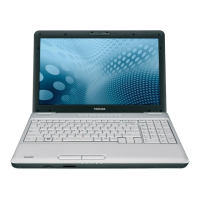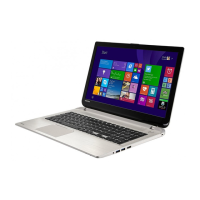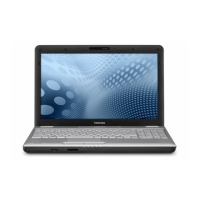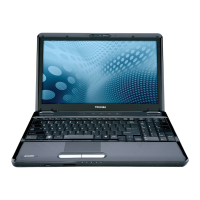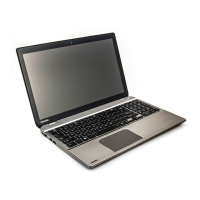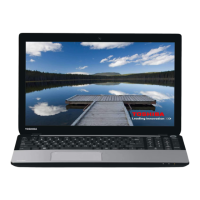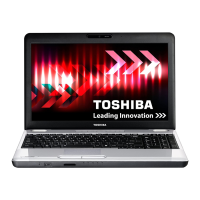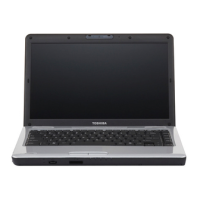
Do you have a question about the Toshiba Satellite L50D-C and is the answer not in the manual?
| Graphics | AMD Radeon R4 Graphics |
|---|---|
| Optical Drive | DVD SuperMulti Drive |
| Storage | 500GB HDD |
| Display | 15.6 inches, 1366 x 768 |
| Operating System | Windows 10 |
| Wireless | Wi-Fi 802.11b/g/n, Bluetooth 4.0 |
| Ports | USB 3.0, USB 2.0, HDMI, Ethernet |
| Battery | 4-cell Lithium-ion |
| Weight | 2.2 kg (4.85 lbs) |
Essential safety guidelines for computer usage, handling, and environmental considerations.
Guides on connecting power, opening the display, turning on, and initial setup.
Overview of Windows features like Start menu, taskbar, search, and settings.
Instructions on how to shut down, sleep, or hibernate the computer properly.
Procedures for creating recovery media and restoring the system from backups.
Guide to touch screen gestures like tap, press and hold, pinch, and slide.
Explanation of touch pad gestures including tap, two-finger tap, pinch, and scroll.
Information on keyboard layout, indicators (CAPS LOCK, NUM LOCK), and function keys.
Details on battery types, charging, monitoring, and extending battery life for optimal performance.
Guide on setting, changing, deleting user and supervisor passwords for system security.
Utility for configuring system settings, BIOS, boot options, keyboard, and USB preferences.
Information on using USB ports for charging devices, including Sleep and Charge features.
Guidelines for identifying and resolving computer problems, including observation and documentation.
Steps to diagnose issues by examining hardware, software, display messages, and indicators.
Solutions for common issues like unresponsive keyboard, frozen programs, and failure to start.
Checklist for hardware-related problems including power, keyboard, display, drives, and peripherals.
Guidance on seeking technical assistance from TOSHIBA or other support resources.


